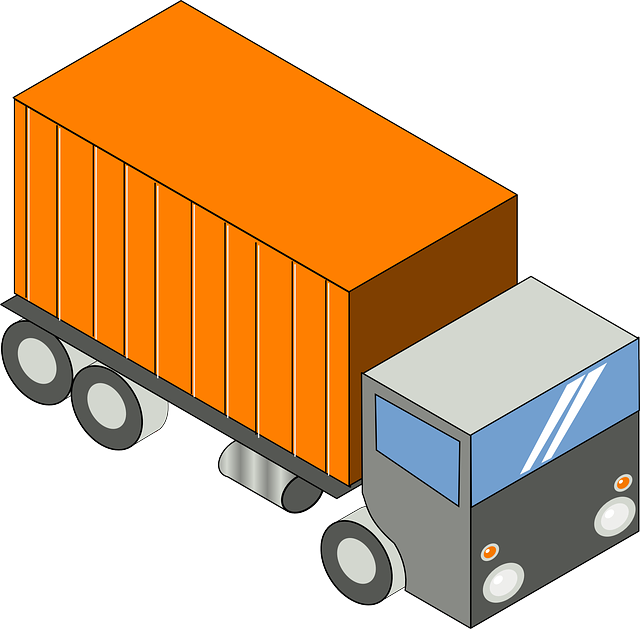Looking to register your car in California? This comprehensive guide walks you through the process step by step. First, understand the eligibility criteria and gather essential documents. Then, schedule and complete a DMV VIN verification, either online or in-person. After approval, pay the registration fees and receive your vehicle’s unique plates. Simplify the process with these clear instructions tailored for California residents.
- Understand Eligibility and Requirements
- Gather Necessary Documents
- Schedule and Complete VIN Verification at the DMV
- Register Your Vehicle Online or In-Person
- Pay Registration Fees and Receive Your Plates
Understand Eligibility and Requirements

Before registering your car in California, it’s crucial to understand the eligibility and requirements to ensure a smooth process. One key step is to verify the vehicle’s identification number (VIN) through the Department of Motor Vehicles (DMV). This process, often referred to as DMV VIN verification, checks the vehicle’s history, including any previous accidents or outstanding issues, which can impact registration.
Additionally, for added convenience and speed, many Californians opt for a mobile VIN inspection or verification service. These services allow you to get the necessary information from your car’s VIN without visiting a DMV in-person. This is particularly useful given the state’s strict regulations and documentation requirements. Ensure that any chosen service is reliable and follows official guidelines to avoid potential delays or complications during registration.
Gather Necessary Documents

Before you begin the registration process, ensure you have all the required documents in order. The California Department of Motor Vehicles (DMV) requires a variety of information to verify your vehicle’s ownership and history. One crucial step is to obtain a Vehicle Identification Number (VIN) verification report, which can be done through a mobile vin inspection or by visiting a DMV office. This process involves checking the VIN against the manufacturer’s records to ensure it matches the reported details.
Additionally, gather important papers such as your valid driver’s license, proof of insurance, and any previous registration documents. It’s also recommended to bring along any maintenance records or repair invoices, as these can be valuable for future reference and may expedite the vin inspection process. Having all these documents ready will make registering your car in California a smoother and faster experience.
Schedule and Complete VIN Verification at the DMV

After gathering all necessary documents and verifying your car’s eligibility, it’s time to schedule and complete the DMV’s VIN (Vehicle Identification Number) verification process. This step is crucial for ensuring that your vehicle meets California’s safety and emission standards before registering it. You can conveniently schedule a VIN inspection through the California DMV website or by phone.
During this process, you’ll either need to visit a local DMV office with your car or, if you opt for a mobile vin inspection service, they will come to you. The inspector will verify essential details like the vehicle’s make, model, year, and overall condition using the unique VIN number. This verification is a critical step in the registration process, ensuring that your car is safe and compliant with California’s regulations before it hits the state’s roads.
Register Your Vehicle Online or In-Person

Registering your vehicle in California is a straightforward process that can be completed online or in-person at the Department of Motor Vehicles (DMV). If you opt for an online registration, you’ll need to start by performing a DMV VIN verification. This involves checking the vehicle’s unique identifier, known as the Vehicle Identification Number (VIN), against the state’s records to ensure it’s not stolen or has any outstanding issues. You can conduct this vin inspection through the official DMV website, where you’ll input your VIN to access detailed information about your car’s history.
Alternatively, many people choose to register their vehicles in-person at a local DMV office. In this case, you’ll still need to provide proof of ownership and complete necessary paperwork. A mobile vin verifier can also be used for in-person registrations to ensure the vehicle’s authenticity during the inspection process. This additional layer of verification ensures that both online and in-person car registration processes are secure and accurate.
Pay Registration Fees and Receive Your Plates

After completing your vehicle’s registration application at the California DMV, it’s time to settle the fees. The cost for registering a car in California varies depending on several factors, such as the type and age of your vehicle. You’ll typically need to pay a base fee, along with any applicable taxes and surcharges. During this process, you can also opt-in for additional services like a mobile vin inspection or plate replacement, if needed.
Once all fees are paid, the DMV will issue your new registration and license plates. In some cases, you may receive temporary tags while waiting for your official plates to arrive. Always ensure proper vin verification through the DMV’s system to maintain compliance with California’s vehicle registration regulations.
Registering a car in California is a straightforward process that requires understanding eligibility, gathering essential documents, and completing key steps like DMV VIN verification. By following these guidelines, whether registering online or in-person, you can efficiently get your vehicle on the road while ensuring compliance with state regulations. Don’t forget to pay the necessary fees and obtain your custom plates as the final touch.
